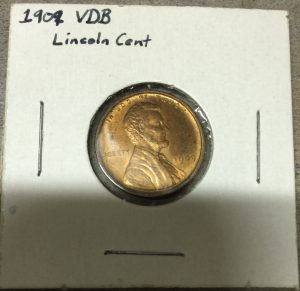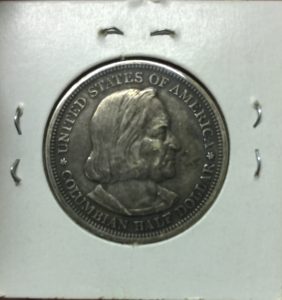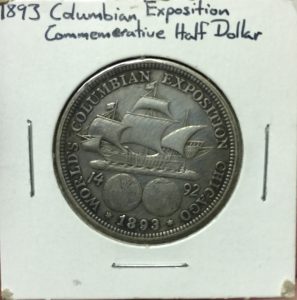I think I promised that I would write up this rant roughly five years ago. Recent announcements of the coming changes to our printed currency has finally triggered me to share one of my favorite old man grumbles with you, a grumble I’ve had since I was 12 years old. The TL;DR version:
I HATE THAT WE DEPICT HISTORICAL PERSONAGES AT ALL ON OUR MONEY
There, I said it. If I had my druthers we wouldn’t have Washington on anything, much less the rest of the questionably dignified dead presidents. In fact, Washington on money was the specific thing they were trying to avoid with the original Coinage Act of 1792. At that time, America was a little touchy about anything that, per the writers of the period, “smacked of Monarchy” or, more rudely, “We waged war to get one George off our coins, damned if we’re going to put another one on.” In the course of the Constitutional Convention, America was arguing about it’s very structure and it got down to seemingly minor things, such as what should our coinage look like? It seems minor until you remember that for as long as anyone in the western world could remember, coins had depicted the current or at least a relatively recent monarch (please ignore the coinage of any Muslim state or iconoclast Byzantium for this argument).
The initial proposal intended to put Washington on all the coins but this was argued back quite forcefully, with Washington’s approval, to a figurative representation of Liberty. And that’s the way our coins stayed until 1909. We had all manner of different representations of Liberty and a few unspecific representations of Native Americans, on the basis that the tribes were the embodiment of freedom and liberty… as long as you ignored the Indian Wars and reservation system entirely. We never depicted an actual person on our coins until the 20th century. Even the Confederacy held to this same minting guidance, not that they had an opportunity to make many coins down in New Orleans with their very limited supplies of bullion. Our paper currency was another matter, with our first post-Andrew Jackson federal bank note in 1862 depicting Lincoln’s Secretary of the Treasury, Salmon Chase, but that’s a separate rant on Jackson being a worse person than most people think in addition to the horrible corruption of the banking system left in his wake.
As an aside, I hate the “In God We Trust” argument about this having always been on our coins, required by law. The only words that have been required since the beginning were “LIBERTY”, “UNITED STATES OF AMERICA”, and something to tell you what the denomination of the coin is. That’s it. To bring it back to ol’ Chase again, he had to get Congress to pass a new Mint Act to permit the coins to actually say anything other than these three things. He started with the brand new two cent piece to see how “In God We Trust” was received and then added it to the rest of the coins from there. Once you start a change, it’s hard to undo it which is why people were so resistant to changing anything on coins in the first place.
Which brings us to 1909*.
To help stave off counterfeiters, the US Mint had been changing the designs of the coins roughly once per 25 years, often more frequently, but the penny had been one of those coins that was hard to change. History had shown Americans to be VERY PROTECTIVE of their pennies and they didn’t like it when people wanted to change them, putting the penny on something closer to a 30-50 year cycle. In 1904, Teddy Roosevelt embarked on a beautification campaign of American currency, arguing that a world class power deserved a beautiful world class money. He got easy agreement to update everything, except the penny. The Indian Head Cent was very popular and no one wanted it to change.

That is until 1909, the centennial year of Abraham Lincoln’s birth. The case was made that The Great Emancipator deserved special recognition, that the most important president since Washington should be immortalized on our coinage in addition to a bunch of fresh statues and buildings in his honor. But that original restriction of the Coinage Act of 1792 remained: you could only depict a figurative representation of Liberty. For Lincoln we made an exception and Congress amended the act to specifically allow Lincoln to be put on the penny.
By 1948, every goddamn coin in the United States depicted a person, with the Walking Liberty falling to Benjamin Franklin on the half dollar. And now, 107 years later we still have Lincoln’s face on the penny. There have been many efforts to change the penny over the decades, with the back of the coin changing four times now, but the idea of replacing Lincoln’s face on the front with something else is a non-starter. Hell, even the argument that we lose money making pennies cannot stand against the tradition of pennies and the face of Lincoln. We are now trapped by the people we honor.
EDIT: As a follow up to answer someone’s question as to what the point of all that was, the purpose was to highlight something historians and archaeologists have always known: a culture’s money says a lot about it. Sometimes it tells the only story we’ll ever know about a culture when the distance in time becomes centuries and those stories also raise questions of their own. Questions like “What happened that they stopped worshiping Liberty and put these people on instead? Who were they? Or are they aspects of Liberty too, because we still see that word there?” This is one of those cases where I rather liked the original intent and the solid 70 years before the first modification of the Coinage Act of 1792. And to quote My Lovely Assistant “It suggests we worship the Founding Fathers like the gods they weren’t.”
These are the things I think about when bored.


*: Or 1892 if you want to be super picky and include the very first commemorative coins. Special half dollars and quarters were struck as a fundraiser for the Columbian Exposition, but they were never intended for circulation and more like a collector’s item instead. Technically, Christopher Columbus is the first historical personage depicted on a coin the US Mint struck, followed shortly after by Queen Isabella for the same Expo.
FURTHER EDIT: As I had people argue with me that “obverse is where the face goes, idiot” I would like to clarify. That would be true on non-American coins and would be true all the way back to the first Lydian coins more or less. The face tells you who’s reign you’re in and thus the rough date it was minted. But America didn’t have kings, thus our obverse was defined by wherever we stamped the date and the word LIBERTY. Part of the olive branch in making the Columbian Expo coin was that Columbus’ head would not be put on the front of the coin with the date. It also doesn’t say LIBERTY, so it was never meant to be a “real” coin to the point that they had to make the qualifying statement “COLUMBIAN HALF DOLLAR”.
The obverse-is-wherever-the-date-is rule went out the window with the Presidential Dollar Coin Program. The Mint Act was amended to more or less remove all the restrictions of the original 1792 act in the interest of artistic freedom. You’ll notice the dollar coin’s date is on the rim now.